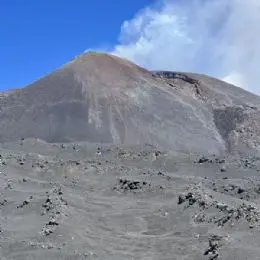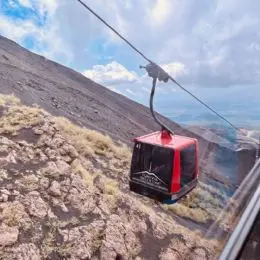Etna Park
The first time that the institution of an Etna Park was thought of, it was around the sixties, when the need to protect nature from the invasion of mass tourism brought about by the diffusion of means began to assert itself among the lovers of Muntagna. of personal transport.
There was much discussion on the subject both among the population and among politicians and it went on until the eighties when, finally, a law (No. 98 of May 1981) of the Sicilian Region, established three Regional Parks and among these that of the 'Etna.
However, to arrive at the real constitution of the Park, it was necessary to wait another six years and arrive at March 1987. Then, during the same year, the establishment of the Etna Park Authority based in Nicolosi, at the ancient monastery of San Nicolò followed. the Arena .
The purpose of the Park is to protect the woodland heritage and the conservation and development of the specific floral and fauna species of the places and to regulate and coordinate the development of those tourist activities that can give usability to the places and well-being to the populations settled in the area. territorial.
Flora
In the summit area of the volcano there is no type of vegetation as no seeds can germinate on recent lavas . Going down to around 2400 meters you will find the soapwort (Saponaria sicula), the Astragalus siculus and some moss and lichen.
Already around 2000 meters you can meet, on some slopes, the Bosnian pine , the Betula aetnensis and the beech and even lower down even chestnut and olive trees. Together with this vegetation coexists the Broom of Etna which with its yellow flowers creates, during the flowering period, a beautiful chromatism with the black of the volcanic lava.
The vineyards of Nerello meet in the hilly area of the slopes, from which the Etna DOC wine of the foothills is produced.
On the north-west side of the volcano, from 600 to 850 meters above sea level, pistachios (Bronte) and strawberries (Maletto) thrive, unique for their flavor and color due to the typicality of the territory and the microclimate. Another notable production is that of various types of pears and peaches, among which the "tabacchiera dell'Etna" stands out.
Fauna
About a century and a half ago Galvagni , describing the fauna of Etna, told of the presence of animals that have now disappeared and have become mythical for us: wolves, wild boars, fallow deer and roe deer.
But the opening of new roadways, wild logging and hunting have led to the extinction of these large mammals and continue to threaten the life of other species.
Despite this, porcupines, foxes, wild cats, martens, rabbits, hares and, among the smaller animals, weasels, hedgehogs, dormice, oaks and various species of mouse still live on the volcano. bat and snake.
Etna Park























